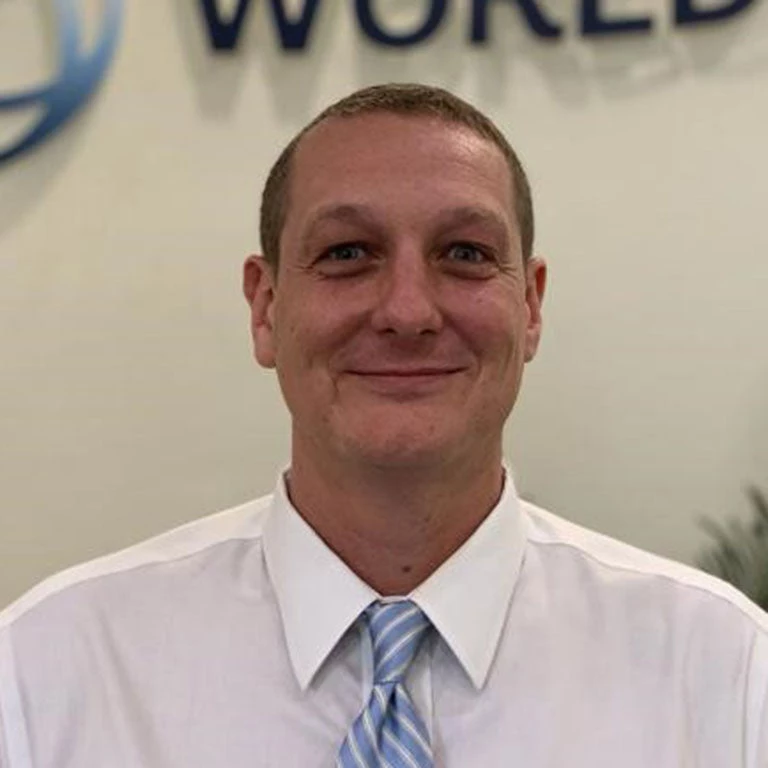 Lémuriens près de Ranomafana, Madagascar. Photo: Arne Hoel/Banque mondiale
Lémuriens près de Ranomafana, Madagascar. Photo: Arne Hoel/Banque mondiale
On this rainy morning in January 2020, I am delighted to join my colleagues from the World Bank office in Madagascar—all of us wearing raincoats and carrying shovels, ready to plant 1,000 trees on a hillside of Ampangabe, about 20 km from the capital, Antananarivo. This is our contribution to the large-scale reforestation campaign launched by the government, whose goal is to plant 60 million trees this year in a bid to halt the alarming degree of deforestation that is destroying more than 100,000 hectares of the country’s forests every year.
Once known as the Green Island, barely 11.5 million hectares of forest remain in Madagascar. The country has lost more than 40% of its natural forests over the past 60 years. Every 10 years, one million hectares of forest either go up in flames, are cleared or are destroyed, triggering significant soil erosion and loss of biodiversity.
Madagascar is one of 10 countries on the planet housing a wide cross-section of global biodiversity, and the country has one of the richest ecosystems in the world: 95% of mammals, 90% of plants, 96% of reptiles, and 100% of amphibians that live in its forests are endemic. Naturally, when its forests are destroyed, these species are also endangered. Nearly 2,300 endemic species are directly threatened by deforestation. The situation is particularly alarming for orchids, with 158 species in critical danger of extinction. More than half (54%) of Malagasy flora is at risk.
In addition to threatening fauna, deforestation also affects many Malagasy people who depend on the forests for food, cooking, heat, and medicine. Four out of five Malagasy people depend on the land, water, and forests to live. In 2019, during a visit to the Masoala National Park, the largest protected area on the island with 235,000 hectares of tropical rain forest, I met and chatted with inhabitants of the surrounding areas. Eliane Nivoarisoa, a mother of five, shared that she could not imagine one second of life without the forest. She was born and raised there and lives off its output. Along with her community, she would like to establish a system of local forest management to protect the forest while also benefiting from its wealth in terms of fruit, dried wood, and medicinal plants.
Deforestation in Madagascar results from several factors. Among the most prevalent is the practice of tavy—a slash-and-burn farming technique that requires clearing of forests then setting the area on fire, the production of charcoal for cooking, and even the illegal trading of precious wood.
While defending the rights of local communities to have access to and make use of the forest zones, the World Bank is enhancing the role of forests in its poverty reduction efforts through two key programs: the Reducing Emissions from Deforestation and Forest Degradation (REDD+) project and the Sustainable Landscape Management Project (PADAP), approved in 2017. The first program consists of remunerating efforts to reduce carbon emissions stemming from deforestation and forest degradation. In this regard, Madagascar has developed an initial emission reduction program, approved by the Carbon Fund, in the eastern rain forest ecoregion of the country. The program will result in a contract for the sale of carbon credits from Madagascar for approximately $50 million. The second program aims to reduce land and forest degradation, better manage water resources, and boost inhabitants’ income and productivity of agriculture in a consolidated manner. The project’s landscape approach integrates the agricultural, water, and environmental sectors and will help Madagascar fulfill its commitment under the Bonn Challenge to restore 4 million hectares of degraded lands by 2030.
However, a successful effort to combat deforestation will require, above all, the involvement of local communities. In many cases, communities are already seeing the effects of deforestation on their lives and livelihoods. Our role is to help them understand why the situation is evolving and why forests are important to their activities and their survival. It is difficult for local communities to grasp the various consequences of deforestation without making the connection to their daily lives. It is, therefore, important to engage in considerable outreach efforts, in parallel with the two programs.
It will not be enough to plant trees. However, reforestation is the start of a larger, far-reaching initiative to save and preserve Madagascar’s forests. The national eco-consciousness that has driven 10,000 Malagasy citizens to plant one million trees on over 500 hectares in Ankazobe on January 19, 2020 is already very encouraging. We must capitalize on this remarkable collective awareness of the urgent action to be taken to allow Madagascar to reclaim its title as the Green Island, the jewel of the Indian Ocean.


Join the Conversation